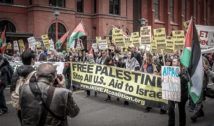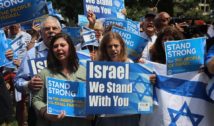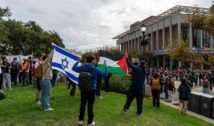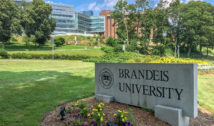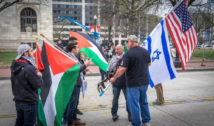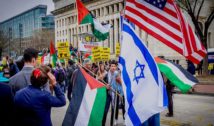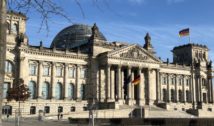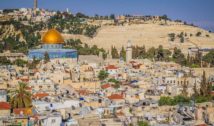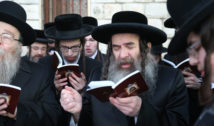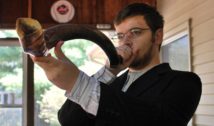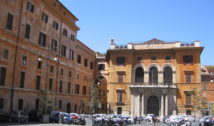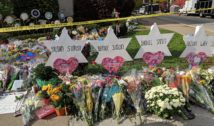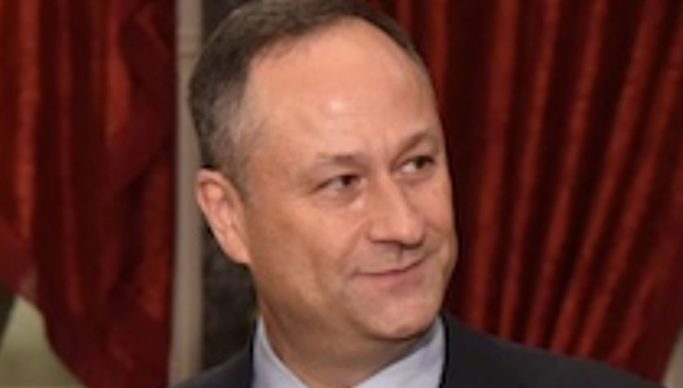
America’s Second Gentleman Takes A Journey to His Roots to Remember—And to Heal
- By Lew Morningstar --
- 10 Mar 2023 --
Second Gentleman, Doug Emhoff, took a journey back to his roots on an expedition that opened old wounds as well as some pathways to hope. The five-day trip to Poland and Germany, accompanied by U.S. special envoy to monitor and combat antisemitism Deborah Lipstadt, was part of a design for a “national action plan against antisemitism,” a project into which Emhoff has poured most of his energies since his wife Kamala Harris assumed the vice presidency.
The five-day passage brought Emhoff to Krakow, Poland, and the nearby Holocaust memorial and museum at Auschwitz-Birkenau, plus a two-hour drive to the village of his ancestors, Gorlice—the place his grandparents fled from to escape persecution.
“They found opportunity and freedom,” he later said, addressing a small interfaith roundtable of Muslims, Christians and Jews hosted by the Central Council of Jews in Germany, the other country he and Ms. Lipstadt visited. “And now, 120 years later, their great-grandchild is the Second Jewish spouse of a United States president or vice president, who is working to combat hate and antisemitism. That’s something isn’t it? It’s a remarkable full circle.”
Up until this trip, Emhoff’s efforts had been purely national, combating antisemitism by speaking on college campuses and at events sponsored by Jewish organizations. But this project brought his message to an international audience and aligned with this year’s International Holocaust Remembrance Day.
The Second Gentleman’s itinerary in Germany included—aside from the interfaith roundtable—meeting with America’s Ambassador to Germany, Amy Guttmann, with Germany’s commissioner of Jewish life Felix Klein, and with Katharina von Schnurbein, the European Commission Coordinator on combating antisemitism and fostering Jewish life. In the two days allotted him, Emhoff also visited a historic East Berlin synagogue—speaking to people of the community there—and three Holocaust memorials in the center of the city.
The purpose of the trip was to share best practices and feed ideas into the “national action plan” that he is working on with Ms. Lipstadt, along with U.S. Ambassador at Large for International Religious Freedom Rashad Hussain and White House Liaison to the American Jewish community Shelley Greenspan. “We are going to put our heads together and talk about what we learned and then put it into the pipeline so we can come out with the most effective national plan,” Emhoff said.
The Second Gentleman changed his schedule to make time for a most important meeting—seeing and listening to survivors of the Holocaust. Sonja Tartakovska survived a Nazi mass shooting in her village, only to flee Ukraine 80 years later to find refuge in Germany. Ms. Tartakovska was not the only Ukrainian Jew who was brought back to Germany for safety.
The irony wasn’t lost on Emhoff that so many who had fled the Holocaust were now seeking asylum in Germany.
“We have been talking about the Holocaust, talking about antisemitism, about violence and oppression and here in Europe all these years later these things are still happening through this unjust, unprovoked war,” Emhoff said after meeting with the survivors.
From people like Tartakovska, Emhoff added, “you hear these stories of survival. A lot of it was a twist of fate, just some luck. A non-Jewish stranger deciding on a whim to do something that then led to a life long-lived.
“I was also struck: One woman”—German Holocaust survivor Margot Friedländer —“was 101 years old. Imagine living with those memories for 80 years. Those are the kinds of things I take back with me.”




